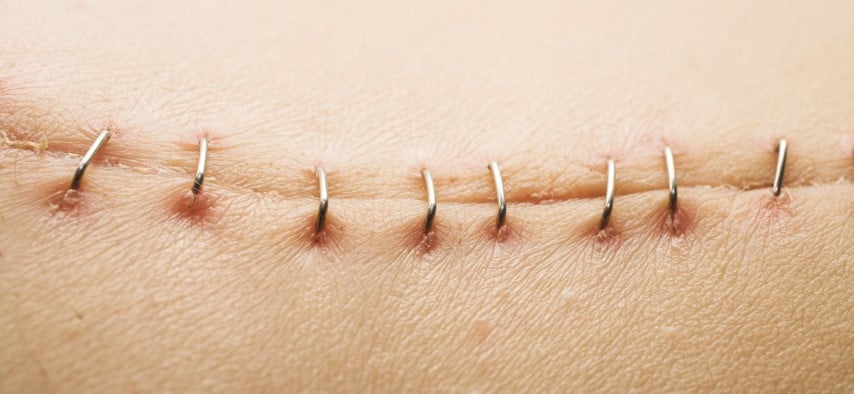Suture removal at home in Dubai is becoming a popular option for patients seeking convenience and cost-effective alternatives. While this process can save time and money, it's essential to follow proper techniques to ensure safety and effective healing. This article provides essential steps and tips for a smooth suture removal process.
When Is It Safe to Remove Sutures at Home?:
Before attempting suture removal at home in Dubai(إزالة الغرز في المنزل في دبي), it's crucial to ensure the wound is ready. Here's when it’s safe to consider removing sutures:
- Proper Healing: The wound should be fully closed with no visible gaps or open areas.
- Timing: Sutures are typically removed between 7 and 14 days post-procedure, depending on the location and type of wound.
- No Infection Signs: Ensure there’s no redness, swelling, or pus at the wound site.
Key Tools for Suture Removal at Home:
To perform suture removal at home safely, having the right tools is critical. Here’s a list of essentials:
- Sterile Scissors: Use sharp, clean scissors specifically designed for cutting sutures.
- Tweezers: Fine-tipped tweezers help grip sutures without damaging the skin.
- Antiseptic Wipes/Solution: Clean the wound area thoroughly before and after the removal.
- Bandages: Ensure you have sterile bandages to cover the area post-removal.
Step-by-Step Guide for Suture Removal:
Follow these steps to ensure the process goes smoothly and safely:
- Step 1: Wash your hands thoroughly with soap and water to minimize the risk of infection.
- Step 2: Clean the wound and surrounding area with an antiseptic solution.
- Step 3: Sterilize the scissors and tweezers with alcohol wipes to ensure they are free from bacteria.
- Step 4: Gently cut each suture close to the skin’s surface without cutting into the wound itself.
- Step 5: Using tweezers, carefully pull the suture out in a slow and controlled manner.
- Step 6: After removing all sutures, clean the area once more with antiseptic, apply ointment, and cover it with a bandage.
Aftercare for Optimal Healing:
Once sutures are removed, proper aftercare is essential to prevent infection and promote healing:
- Keep the Wound Clean: Clean the wound daily with mild soap and water, ensuring that it stays free from dirt and bacteria.
- Apply an Antibiotic Ointment: Use antibiotic ointment to keep the area moist and protect against infection.
- Cover the Wound: Apply a clean, sterile bandage to the wound for the first few days after suture removal.
- Avoid Pressure: Refrain from putting pressure on the area or disturbing the healing skin.
Common Mistakes to Avoid During Suture Removal:
To avoid complications during the process, steer clear of these common mistakes:
- Inappropriate Timing: Removing sutures too early or too late can cause the wound to reopen or lead to unnecessary scarring.
- Using Non-Sterile Tools: Non-sterile instruments can introduce harmful bacteria, increasing the risk of infection.
- Not Following Aftercare Instructions: Failing to properly care for the wound after suture removal can impede healing and cause complications.
- Rushing the Process: Take your time when removing sutures; rushing increases the risk of cutting the skin or causing unnecessary discomfort.
Signs of Infection to Watch Out For:
After performing suture removal at home(إزالة الغرز في المنزل), it’s important to monitor the wound closely for signs of infection. Here are some symptoms to watch for:
- Redness and Swelling: Increased redness and swelling around the wound may indicate infection.
- Pus or Discharge: The appearance of pus or any unusual discharge from the wound site requires immediate attention.
- Excessive Pain: Persistent or increasing pain after the removal may be a sign of an infection.
- Fever: A fever or chills could indicate that the infection has spread and requires medical attention.
When to Seek Professional Help:
There are certain situations where seeking professional medical help is essential:
- Difficulty Removing Sutures: If the sutures are hard to remove or seem embedded in the skin, it’s best to consult a healthcare professional.
- Infection Symptoms: If you notice any signs of infection despite proper aftercare, consult your doctor immediately.
- Wound Opens or Bleeds: If the wound opens or bleeds excessively after suture removal, it’s crucial to seek professional care promptly.
Conclusion:
Suture removal at home in Dubai can be a practical and effective way to manage your recovery, provided you follow the correct steps and safety precautions. With the right tools, patience, and aftercare, you can ensure a successful suture removal process that promotes proper healing. However, always remember to monitor your wound for signs of infection and seek medical attention when necessary.

